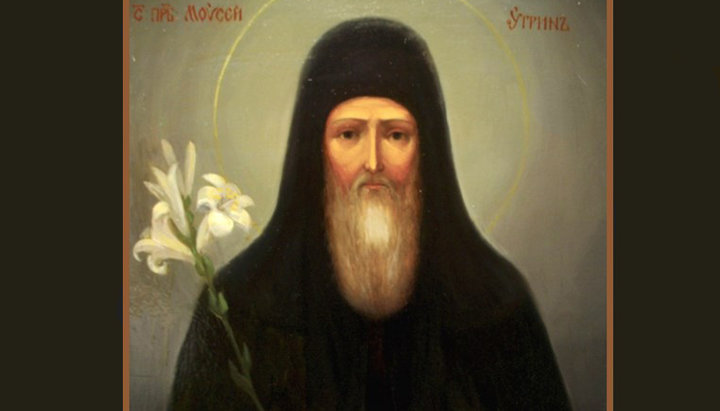Moses the Hungarian and the trendiest passion of our time

Why was Venerable Moses the Hungarian so afraid of a sin that modern young people don’t even consider a problem?
On August 8, the Church commemorates Venerable Moses the Hungarian.
Moses the Hungarian (“Hungarian” indicating his ethnic origin) served in the retinue of Prince Boris, a passion-bearer. After Boris was murdered by Sviatopolk the Accursed, Moses hid in Kyiv. In 1018, he ended up in Poland, becoming a captive of King Bolesław. There, he was taken by a wealthy Polish widow who desired to marry him. She ransomed him from captivity, intending to make him her husband. But Moses refused to enter into any intimate relationship with her, for he wished to become a monk.
The woman tried every means to seduce him: she dressed him in luxurious clothes, served him exquisite food, flaunted her riches, had her servants bow before him, and called him her husband. Even the king himself urged Moses to marry her.
While passing through Poland, an Athonite hieromonk secretly tonsured Moses as a monk. When the woman found out, she had him tied to a bed in an attempt to rape him. But when she began caressing him, the saint, by prayer and a mighty effort of will, rendered his body lifeless and numb. Enraged, she had Moses stretched out and beaten daily with a hundred blows. Finally, losing all hope of seducing the ascetic, she ordered that he be castrated.
Soon afterward, a rebellion broke out in Poland. The woman was killed, and Moses, miraculously surviving despite his wounds, made his way to the Kyiv-Pechersk Monastery, where he lived for another ten years. For his victory over lust, the Lord granted him the power to help others overcome the passion of fornication.
Like his biblical namesake who worked miracles with a staff, the saint once touched a fellow monk’s chest with his cane – and that monk was never again tormented by lust.
Once, a monk tormented by lust came to Moses for help. Moses told him: “Never speak a single word to a woman for the rest of your life.” The monk vowed to obey. Then the saint, like the biblical Moses who performed wonders with his staff, touched the monk’s chest with his rod – and the monk was delivered from all lustful torment.
This gift of grace did not leave Moses even after his death. In the Life of Saint John the Much-Suffering, it is written how John buried himself up to his shoulders in a cave in Kyiv, opposite the relics of Moses, to fight his carnal passions. Even such extreme asceticism did not free him from lust. Healing came only when the Lord revealed to him that he should pray to the monk buried beside him. Later, John himself healed another monk from lust by instructing him to place a relic of Moses the Hungarian on his body.
* * *
Why was Venerable Moses the Hungarian so terrified of the sin of fornication? For the modern young person, a casual sexual encounter is no big deal. And if it involves a beautiful, wealthy woman – such a relationship would even be considered desirable! Why, then, was Moses so radical in his decision?
Because he was a Christian and wanted to live by God’s law. Moses didn’t even want a lawful marriage with the Polish noblewoman – he wanted to dedicate his entire life to God. How much more would he reject fornication!
Only in lawful marriage does bodily union fulfill God's commandment; in fornication, it serves the devil.
In his letter to the Corinthians, the Apostle Paul writes: "Do you not know that your bodies are members of Christ? Shall I then take the members of Christ and make them members of a prostitute? Never!" (1 Cor. 6:15).
According to Pauline theology, the Church is the Body of Christ (see Eph. 1:23), and we, the faithful, are members of that Body (see 1 Cor. 12:27). When we give our body over to fornication, we tear it from the Body of Christ and defile it.
This is the mystical nature of all sexual immorality. No wonder lust was always a part of pagan orgies and satanic rituals. Fornication is always a desecration of the holy and a theft from God – of what He created and what rightfully belongs to Him.
This becomes especially evident when one sins with a harlot. "Or do you not know that he who is joined to a prostitute becomes one body with her? For, as it is written, 'The two shall become one flesh.' But he who is joined to the Lord becomes one spirit with Him." (1 Cor. 6:16–17).
Interestingly, Paul here uses words spoken by the Lord about marriage. Why? Because in both cases the union of two bodies forms a single whole. Only in lawful marriage does this union fulfill God’s will; in fornication, it serves the devil.
Even more strikingly, the Apostle equates the body with the spirit: “The two shall become one flesh” is immediately followed by: “He who is joined to the Lord becomes one spirit with Him.” Why? As Saint Theophan the Recluse explains: “Because even in marriage the body is not without the soul, and in union with the Lord, the spirit is not without the body.”
Indeed, the body lives by the spirit, and the spirit lives in the body. A human being is both spiritual and bodily. And fornication is not merely a sin of the flesh, as many think – it is a spiritual crime.
One of the saints said that lust is a passion one must never look in the eye.
"Flee fornication" (1 Cor. 6:18) – writes the Apostle Paul. This is one of the rare instances where Paul doesn’t tell us to fight sin but to run from it.
Truly, one of the saints said that lust is a passion one must not dare face head-on. Among all the spiritual struggles of the saints, the most terrifying and painful were those against the sin of lust.
Saint John the Much-Suffering, tormented by impure thoughts, buried himself waist-deep in the ground until the lower half of his body rotted and teemed with worms. Saint Martinian, tempted by a harlot, jumped into a burning fire and stood in it until he was half-dead from burns. Saint Mary of Egypt endured seventeen years of unbearable torment in the lifeless desert before lust left her. One monk smeared his clothing with the putrid matter of a rotting corpse and wore it until God healed him of lust.
Direct battle with this passion is too terrifying. Are you sure you could withstand it?
That is why Paul advises us to flee from it. Direct battle with this passion is too terrifying. Are you sure you could withstand it? If not, then run. Run from unclean thoughts, and from anything that might lead you to temptation.
* * *
Venerable Moses preserved his bodily and spiritual purity for Christ. He chose torture over betraying the commandment of God. That is authentic Christianity – unyielding and exacting when it comes to obeying God’s commandments. Fornication is no toy, no trivial matter. It is a monster that quickly devours its victim.
Today, no one but the Church will dare say this to the world. The entire secular culture has bowed before lust. And through the commemoration of Saint Moses the Hungarian, the Church once again reminds Christians: Flee fornication.
"Your adversary the devil prowls around like a roaring lion, seeking someone to devour." (1 Peter 5:8)
And the devil devours through passions – most especially, through lust, the trendiest passion of our time.










